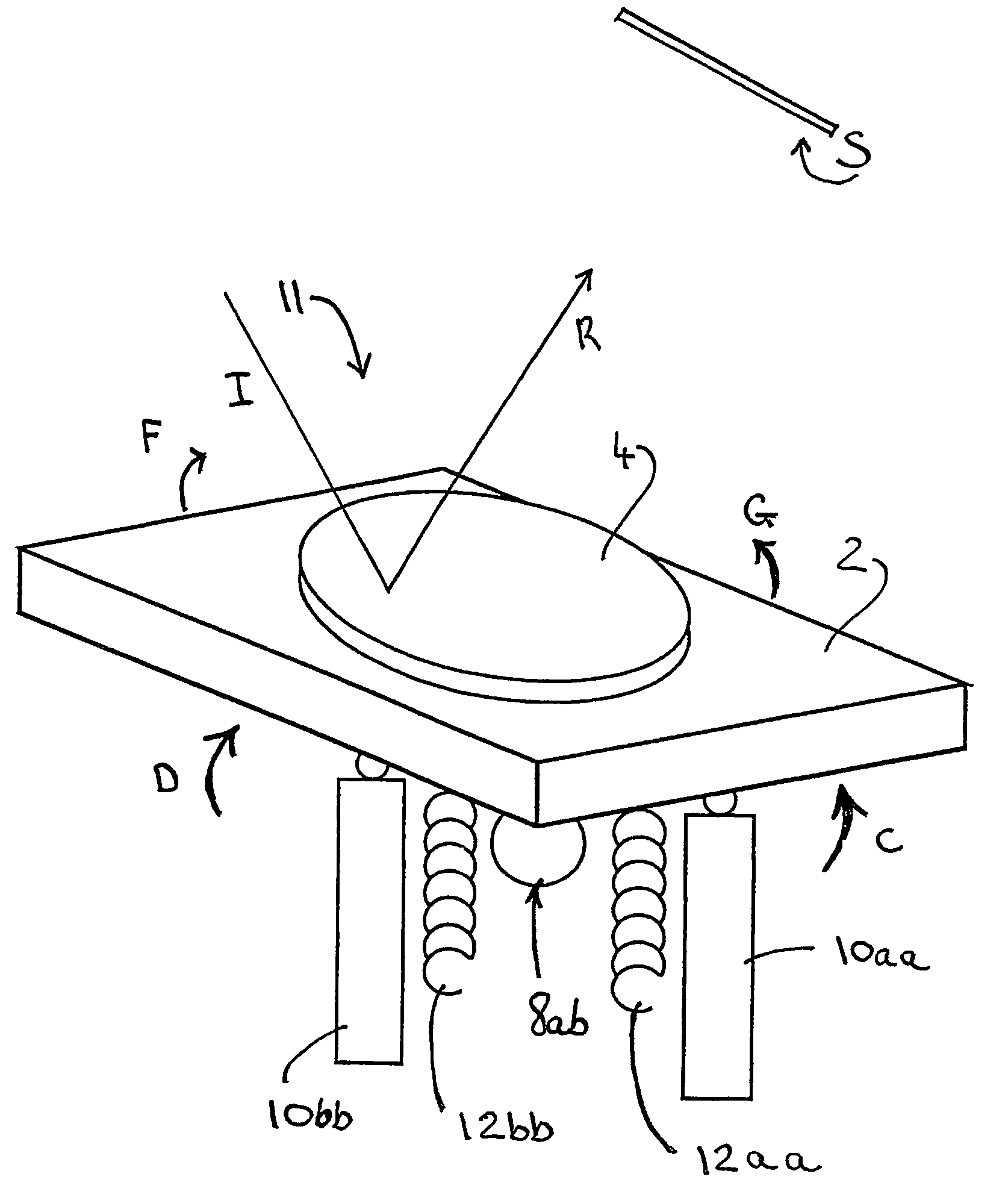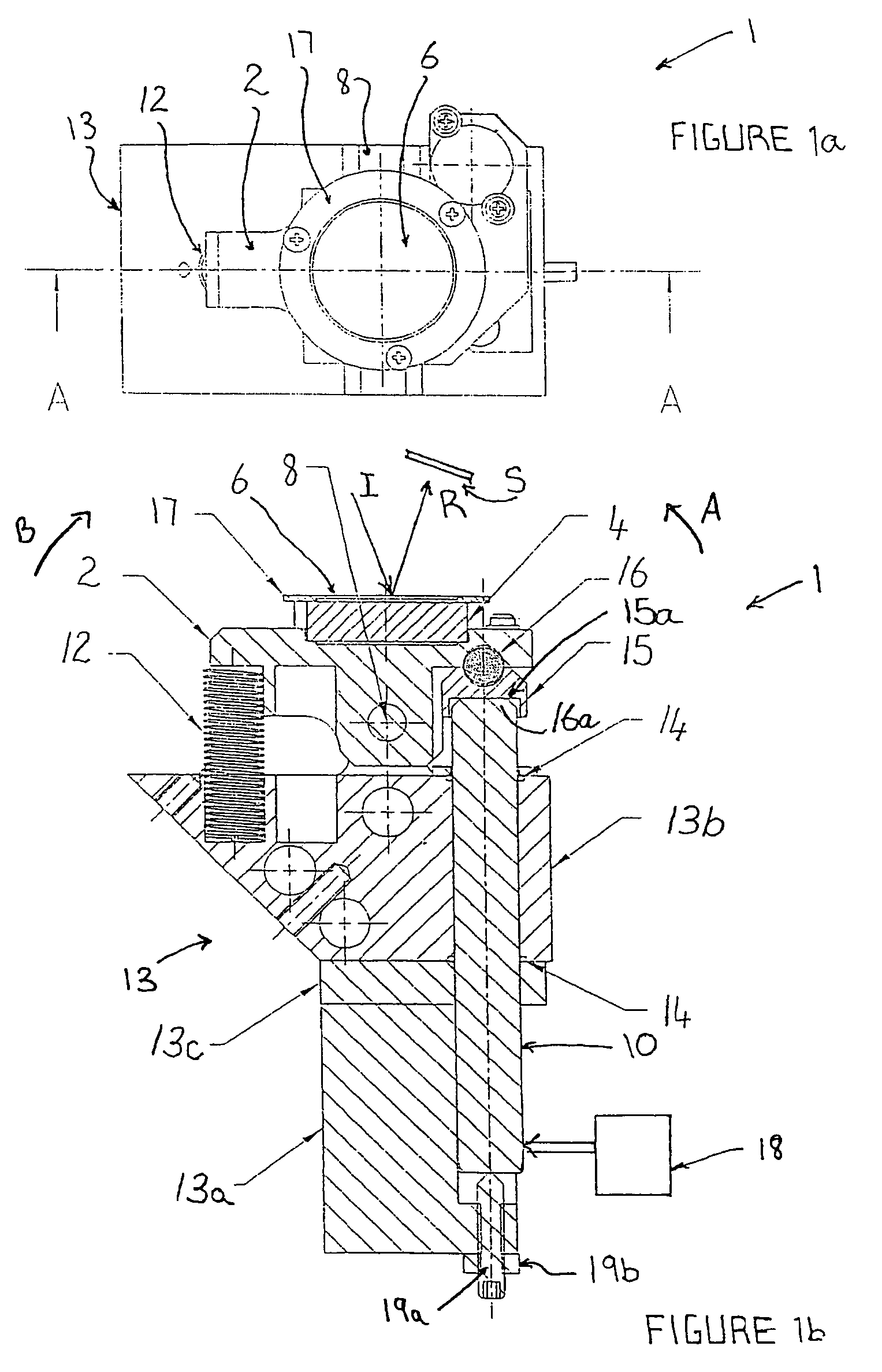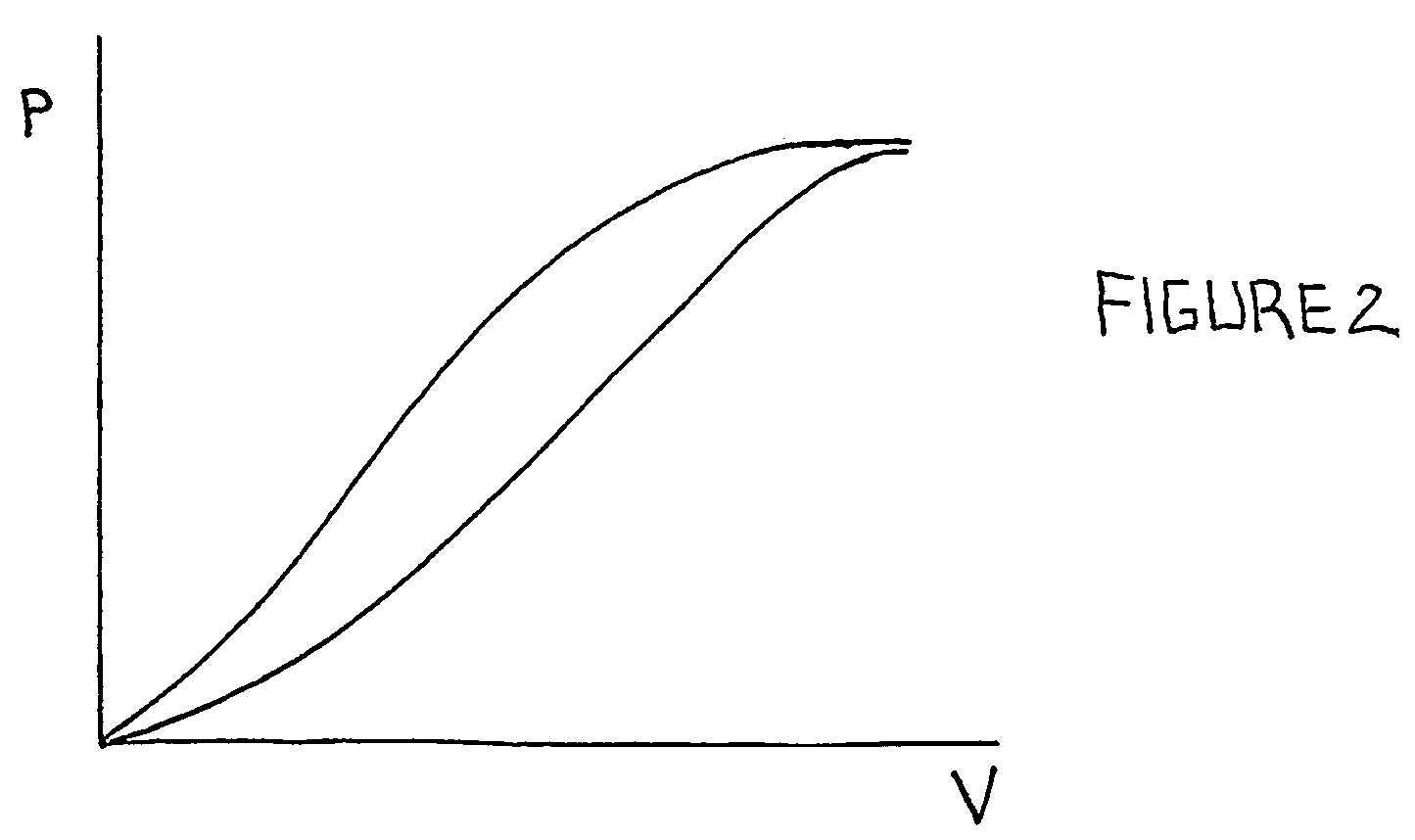Scanning device and method of scanning an optical beam over a surface
a scanning device and optical beam technology, applied in the field of scanning devices and methods of scanning optical beams over a surface, can solve the problems of galvanometer scanners with limited accuracy, mirrors that are not large enough for the optical system, and more of a problem
- Summary
- Abstract
- Description
- Claims
- Application Information
AI Technical Summary
Problems solved by technology
Method used
Image
Examples
Embodiment Construction
[0103]In FIGS. 1a and 1b, there is shown an optical scanning device 1 that is able to reflect an incident optical beam I so that the reflected optical beam R can be directed to a surface S such that the reflected optical beam R is scanned over the surface S.
[0104]The optical scanning device 1 comprises a platform 2, a mirror 4 having a reflective surface 6, a pivot 8 about which the platform 2 is able to pivot, a piezoelectric stack actuator 10 to pivot the platform 2 about the pivot 8 in a first direction, and a resilient spring 12 to bias the platform 2 about the pivot 8 in a second direction that is opposed to the first direction. The pivot 8 is a pivot shaft.
[0105]The optical scanning device 1 is further provided with a body 13 to support the other components of the optical scanning device 1. The body 13 comprises an anchor block 13a and a main block 13b that are separated by a spacer 13c. The main block 13b supports the piezoelectric stack actuator 10. A pair of O rings 14 are ...
PUM
| Property | Measurement | Unit |
|---|---|---|
| length | aaaaa | aaaaa |
| scan angle | aaaaa | aaaaa |
| distance | aaaaa | aaaaa |
Abstract
Description
Claims
Application Information
 Login to View More
Login to View More - R&D
- Intellectual Property
- Life Sciences
- Materials
- Tech Scout
- Unparalleled Data Quality
- Higher Quality Content
- 60% Fewer Hallucinations
Browse by: Latest US Patents, China's latest patents, Technical Efficacy Thesaurus, Application Domain, Technology Topic, Popular Technical Reports.
© 2025 PatSnap. All rights reserved.Legal|Privacy policy|Modern Slavery Act Transparency Statement|Sitemap|About US| Contact US: help@patsnap.com



